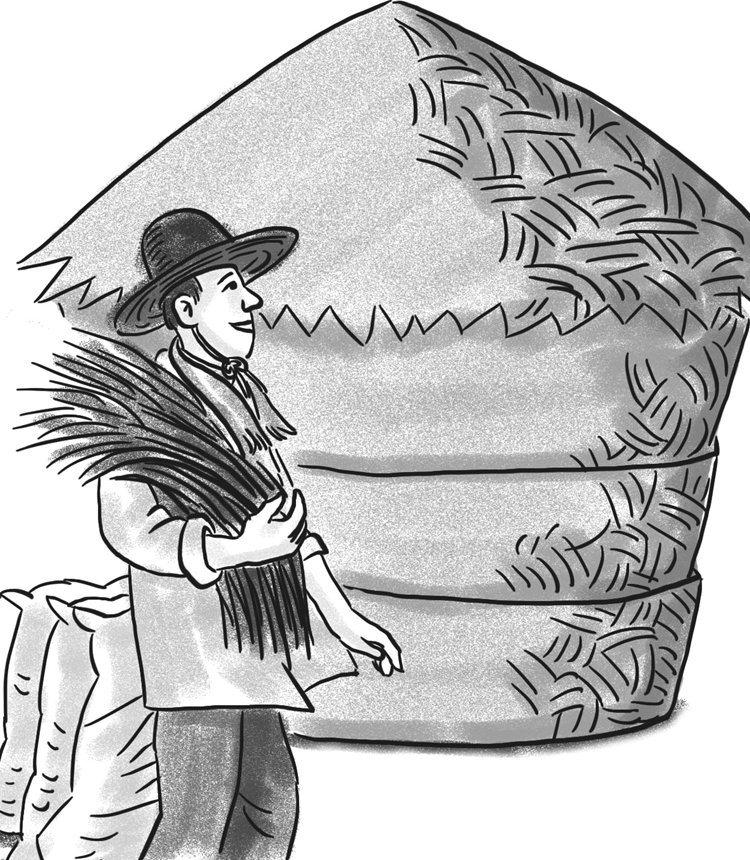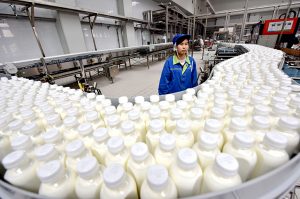
And recounts of poverty alleviation achievement and opening-up in the agricultural market around World Food Day indicate more opportunities in Chinese agricultural industry.
With the latest round of substantive trade talks, agricultural trade between China and the US has seen signs of getting back on track. However, imports diversification should be a general direction to ensure China’s food security.
According to white paper on food security in China released on October 14, the Chinese agricultural market has widened. Foreign-funded companies in food related industries processed growing quantities of food supplies, which took up 14.5 percent of the national total in 2018. Those firms also reaped increasingly more revenues from sales, which was 17 percent of the total last year.
There has been an unusual situation in the Chinese agricultural market in recent years. Agricultural imports maintained a high level while domestic agricultural supply kept building up. China’s grain output in 2018 was 658 million tons, compared with 607 million tons in 2014. In comparison, grain imports in the past three years have been stable at above 20 million tons annually. Similar situations also happen to corn and soybeans. There are multiple reasons for it.
Despite that the self-sufficient rate for rice, wheat and corn are over 95 percent in China, the domestic demand for agricultural products still outweighs the output. A booming economy has brought consumption upgrades and diversification of demand to Chinese consumers. Therefore, imports remain steady and will likely continue the upward trend.
Another reason is the further opening-up of the agricultural industry, which has set up a more competitive market. Since joining the WTO, China has honored its promises step by step. The tariffs and non-tariff barriers in the Chinese agricultural industry dropped significantly over the years. Additionally, multiple free trade areas were established between China and other countries, which also helped bring down tariffs. For example, the free trade deal between China and Australia has slashed the average tariffs of Australian agricultural products entering China from 12.94 percent down to 0.51 percent.
Agricultural commodities prices on the international market have been declining. According to the food price index of the Food and Agriculture Organization of the United Nations, the food price including dairy, cereals and vegetable oils took a dive from 2014 to 2015 and stayed on the bottom ever since. The lower price in the international market widened the price differences with the Chinese domestic market. Overseas agricultural products, with better quality and lower prices, appear more appealing to the Chinese wholesalers.
For these reasons, even with more production, the Chinese demand for foreign agricultural goods will not dip and Chinese market will continue to open up to consume agricultural products worldwide.
With the US suspending a tariff hike and China purchasing more agricultural products, both sides have made constructive moves toward reaching a trade deal. The bilateral agricultural trade, which had been hampered by the trade dispute since last year, will be revived.
Chinese companies have purchased agricultural products including 20 million tons of soybeans, 700,000 tons of pork, 230,000 tons of wheat and 320,000 tons of cotton from the US since the beginning of the year, a Chinese Foreign Ministry spokesperson said on Tuesday. The agricultural imports from the US will be accelerating.
However, as capricious as the Trump administration is, China has to take a cautious and prudent attitude when it comes to agricultural trade. The country will keep its commitments. But on the other hand, it will have to push import diversification of agricultural products.
Aside from Brazil, Argentina has also become an important alternative market for soybean imports. In first five months of 2019, soybean imports in terms of volume from Argentina skyrocketed 2,310 percent compared with the same period last year. India has replaced the US’ position in soybean meal, and the import volume has jumped over 200 percent year-on-year for the first five months this year.
To ensure China’s food security, the import sources will have to be diversified. Other than trade, with more opening-up measures rolling out and a shorter negative list, foreign investors will see more investment opportunities in agricultural areas as well. The prospects for foreign-funded companies look promising.

























